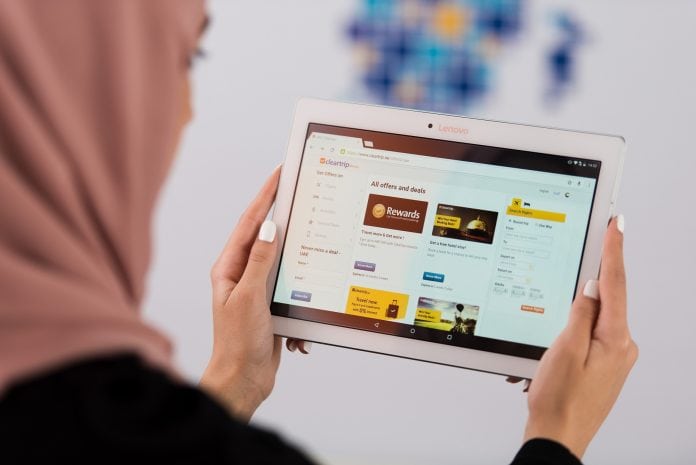
Significant industry changes highlighted in the Cleartrip 2017 Travel Insights Report
- Kuwait saw the highest air growth rate in the region at 20%
- Mobile bookings in Saudi Arabia jumped 116% compared to 2016
- Majority of travel bookings in the region occur within a week prior to departure
- Yerevan topped the most trending destinations, jumping 498% y-o-y
The online travel sector in the GCC grew 9% in 2017, reveals Cleartrip, the leading mobile and online travel company in the Middle East, in its 2017 Travel Insights Report. The report, which derives insights from the company’s proprietary data and the data from over 400 partner airlines, also showed that mobile bookings in Saudi Arabia jumped 116% during the year.
“As the online travel industry leader in the region, we closely monitor the new and dominant travel trends in the market to inform our business and product decisions and the 2017 Travel Insights Report is a natural outcome of our intense focus on understanding and solving customers’ needs. Our team has sifted through millions of data points to offer deep insights into the unique trends in the region’s travel scene and customer behaviours. In a highly competitive and ever-changing world of travel, the learnings from this report will help travel companies align their business and product strategies to the current and future needs of the market,” said Stuart Crighton, Founder & CEO of Cleartrip.
The findings of the report show that the air industry witnessed mixed growth in different markets in the GCC in 2017. In Kuwait, the air industry expanded at a growth rate of 20% compared to 2016, while in Saudi Arabia year-over-year growth was at 14%.
Even though desktop continues to be the dominant platform for travel bookings, the region has been witnessing a growing shift to mobile. In Saudi Arabia, where mobile bookings grew at a whopping pace of 116% in 2017, 31% of bookings represented purchases made on mobile as compared to 69% desktop-based purchases, whereas in the UAE, which witnessed a 60.65% rise in mobile transactions last year, 25% of total bookings took place on mobile devices against 75% on desktop.
Among the top regional cities assessed, Riyadh had the highest rate of mobile booking penetration (MBP), followed by Jeddah, with total purchases made on mobile devices in the two cities amounting to 32% and 31%, respectively.
Interestingly, the findings showed that there is a clear correlation between the number of travellers per ticket and the platform used for booking. Customers in the region increasingly prefer computers over mobile for purchases as the number of travellers increased. For solo travellers, 27% of bookings were made on mobile, while 83% of reservations for a group of ten persons took place on desktop.
The findings of the report show that ticket prices for air travel between different origin and destination cities recorded a significant drop in 2017, as compared to the previous year. Jeddah-Dubai marked the biggest decrease with a 28% slump in travel fare followed by Beirut-Dubai that saw an average price decline of 21% during the year.
In 2017, the average fare per booking stood at AED 1,580 in Kuwait, AED 1,453 in Saudi Arabia, and AED 1,422 in Bahrain. The average fares per booking on mobile for these countries were AED 1,543, AED 1,322 and AED 1,276, respectively. In Oman, which recorded the lowest average fare per booking in the region, it was AED 1,030 overall and AED 944 for bookings made on mobile devices.
Contrary to popular belief, the majority of travel bookings in the GCC – and Saudi Arabia in particular – are taking place within a week prior to departure and mobile outperforms desktop in last-minute purchases. The comprehensive report shows that 48.3% of mobile bookings and 41.4% desktop reservations in the GCC during the past year occurred up to a week ahead of travel. Similarly, in Saudi Arabia, 48.3% of travel bookings on mobile devices and 44.9% via desktop were made within seven days of departure.
The 2017 Travel Insights Report also shows that 18% of travellers had an average trip length of 35 days and more, while the average trip duration of up to 6 days represented 27% of all trips made during the year.
The region witnessed a large portion of its travel activity in August, followed by July as travellers in the region, which is home to a huge population of youth and expatriates, made their summer holiday trips. April, May, and September were also the preferred months for travel, while October and November recorded the least number of trips in 2017.
Dubai took first place on the list of top five destinations for travellers in the region in 2017, followed by Sharjah, Manila and Abu Dhabi. On the other hand, Yerevan topped among the most trending destinations during the last year, with a whopping leap of 498% over 2016. Tbilisi and Kathmandu came in at second and third place, jumping 210% and 207%, respectively. Among the 10 prominent destinations of choice for family trips, Jordan topped the list, followed by Tbilisi and Beirut.
In the region, credit card continues to be the preferred method of payment for travellers. In 2017, Bahrain topped among the six countries in the region with 94% transactions made on credit cards, while in Saudi Arabia 28% of purchases were made using debit cards. In the UAE, credit card, debit card and other payment methods represented 81%, 13% and 6.3% of total bookings, respectively.
Cleartrip’s booking data also shows that 20% of travellers like to grab a bargain on tickets in the UAE, which is followed by Kuwait where 19% of customers prefer promotions and deals.
































